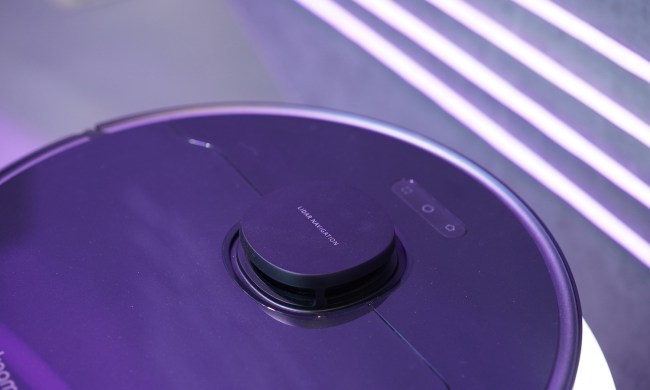Some wearables are subtle, relatively understated devices like smartwatches, which nonetheless have the ability to make a major impact on their wearers’ lives. Others are a little more ostentatious — like this animated wearable tail that promises to improve users’ balance and agility by, err, giving them an appendage straight out of the Alien movies. Because who doesn’t want to incorporate a spot of cosplay into their daily lives?
Called Arque, this “artificial biomimicry-inspired tail for extending innate body function” was developed by researchers at Keio University in Japan. Its creation was inspired by the way that monkeys are able to leap from tree to tree, while using their tails for balance by shifting their center of gravity.
The tail is created using multiple interlocking plastic vertebrae. This modular design means that additional segments could be added, or removed, to better fit the size of the wearer. The tail itself is powered using compressed air, which causes four artificial muscles to contract or expand in order to make the tail move. Right now, it requires an external air compressor, but this could potentially be removed in the future as other power systems are developed.
Believe it or not, this isn’t the first robot tail we’ve covered at Digital Trends. For example, Digitails are wearable animatronic prosthetic tails you can control using your smartphone. However, unlike those more frivolous wearables aimed wholly at the novelty market, the Arque tail is intended as a serious tool for work. Similar in concept to the wearable exosuits developed by companies like LG, the idea is that this could be used to help workers to lift and carry heavy items by giving them a counterbalance.
The researchers also have some more recreational ideas for the tail. One of the most interesting of these would be to use the tail as a virtual reality tool to help alter wearers’ balance as they explore different virtual worlds.
Getting to the stage where this is ready for prime time will take a bit more work. Nonetheless, this is another intriguing nature-inspired bit of robotics work that shows that there are still plenty of original ideas in the wearables space — even if, right now, we can’t see this beating the Apple Watch in terms of market share.


